Types of washing machine drives
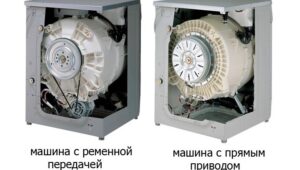 The “heart” of an automatic machine is the engine. An electric motor rotates the drum, ensuring the washing process. Energy from the engine to the “centrifuge” is transferred through a drive mechanism. Let's figure out what types of washing machine drives exist, which one is better to give preference to and why.
The “heart” of an automatic machine is the engine. An electric motor rotates the drum, ensuring the washing process. Energy from the engine to the “centrifuge” is transferred through a drive mechanism. Let's figure out what types of washing machine drives exist, which one is better to give preference to and why.
Main types of drive mechanisms
When choosing a new washing machine, people try to study as much information as possible about the machines in order to settle on the most practical and reliable model. Many people are interested in what types of drives there are in modern washing machines. There are two main types of devices.
- Belt drive. A cheaper mechanism, known since ancient times. They were also equipped with washing machines produced in Soviet factories. In this case, the energy from the electric motor is transferred to the drum via a belt.
- Direct drive. Relatively recent technology. This development was first used by the South Korean brand LG. In this case, the electric motor and the drum are actually combined into one. The design has no additional moving elements, which increases the reliability of the device.
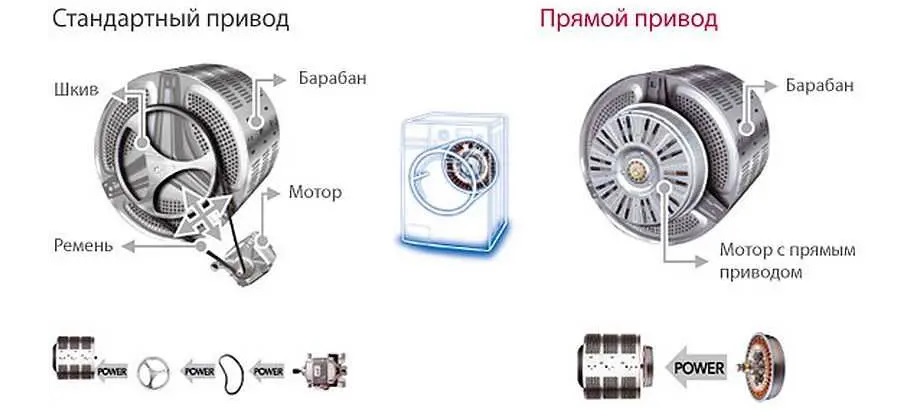
Thus, modern automatic cars can be either direct or belt driven. Engineers have not yet invented any new technology. Perhaps in the future, the drum will rotate using magnets, but today direct-drive washing machines are at the top of the “evolution”.
Classic mechanism
Belt drive is considered a classic. This is a relatively simple mechanism - revolutions from the engine are supplied to the drum pulley via an elastic band. The belts that modern machines are equipped with are very thin and elastic - due to this, a low noise level is achieved when the washing machine operates. The inner surface of the strap usually has a fabric backing, which helps reduce vibration.
There are two types of drive belts:
- wedge-shaped - they have a characteristic pattern on their surface;
- rivulet - have longitudinal ribbing on the “wrong” surface, due to which good adhesion to the drum “wheel” and the motor pulley is achieved.
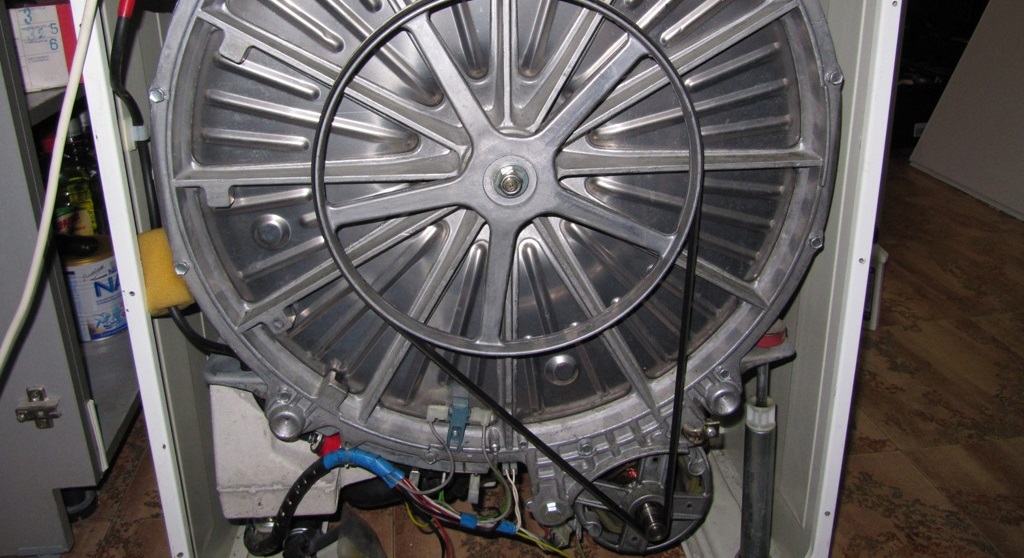
In fact, there are no significant differences between V-belts and ridge drive belts. They have approximately the same characteristics and grip properties. Therefore, you should not focus on the type of elastic band.
The belt is the weakest point of the classic drive mechanism.
Elastic bands tend to stretch and even tear, especially when the machine is periodically overloaded with laundry. However, the undoubted advantages of a belt drive are low cost and maintainability. Even a housewife can replace the belt, and the components will be quite inexpensive.
Many buyers, when choosing a machine, always look at the price. The production costs of a belt-driven machine are much lower, which is reflected in the final, low cost of such washing equipment. But where do more expensive direct-drive washing machines benefit from? Let's try to figure it out.
Beltless drive
Direct drive is a relatively recent development of Korean engineers. Direct drive washing machines do not have a belt, and the inverter motor is connected directly to the drum. What are the main advantages of such mechanisms?
Firstly, there is a ten-year warranty on the motor.Almost all manufacturers are confident that the inverter will last more than 10 years without requiring repairs. Of course, the warranty period for other components and parts is standard, but even for the electric motor, such a long period of free service is quite attractive.
Secondly, manufacturers claim that direct drive machines are quieter. The engine spins the drum almost silently; during the washing process, only the gurgling of water can be heard. You can hear other sounds during the spin cycle, but this is not surprising; the engine has to spin the “centrifuge” to 1000-1200 rpm.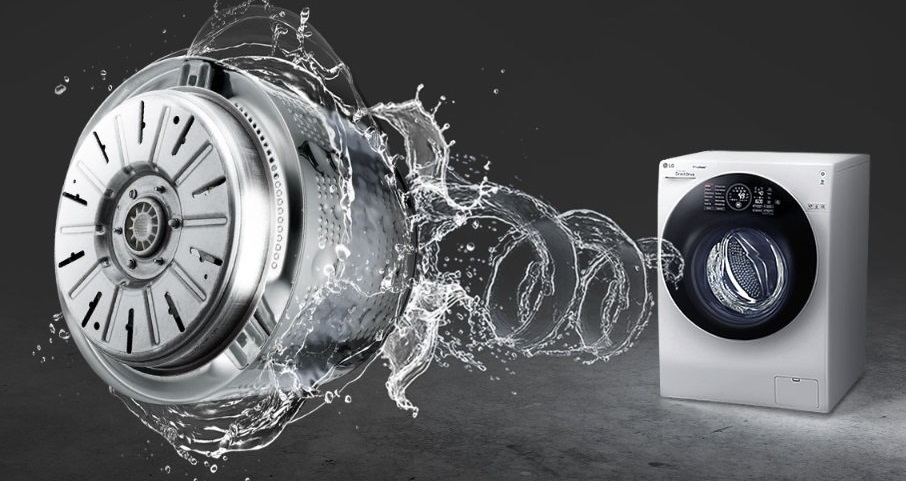
If you compare the noise level emitted by belt- and direct-drive automatic machines, the latter are definitely quieter. Of course, if the washing machine is installed correctly, level, on a hard floor.
Another advantage is the minimum number of additional parts. To spin the drum, the motor does not require a belt, pulley or other elements. This reduces both the noise level and the intensity of vibrations. Therefore, direct drive inverter machines work quietly, without “jumping” around the room.
Which option is better?
When choosing an automatic machine, users think about what type of drive they should choose. To overcome doubts, it is necessary to find out about the advantages and disadvantages of each mechanism and compare them at certain points. Let's briefly go through the main parameters.
- Price. If this factor is the main factor when choosing a machine, then belt drive washers will be your favorite. Usually they are much cheaper than direct-drive automatic machines with similar functional “stuffing”.
- The need for periodic maintenance.The drive belt is prone to wear. Owners of collector machines will have to change the rubber every 2-4 years, the period will depend on the intensity of use of the equipment. Also, the brushes in the commutator motor wear out and need to be reinstalled every few years. Automatic machines with direct drive do not have this problem - engine maintenance will not be required for at least 10 years.
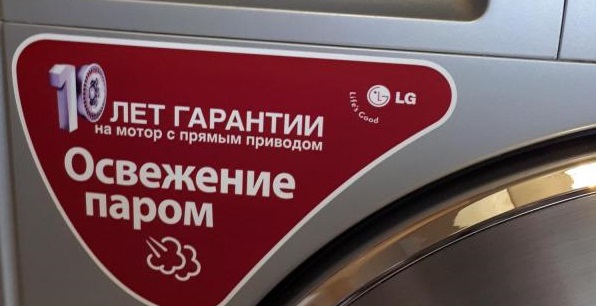
- Noisy during operation. Direct drive is definitely better in this regard. If you are thinking of installing a washing machine in the kitchen, then you should give preference to an inverter - it will not bother family members with rattling and buzzing. When the machine is in the bathroom, the noise even from a machine with a belt drive will not annoy the household.
- Economical. Modern direct drive machines consume less electricity than belt drive machines. Also, many inverters are able to determine the weight of the laundry in the drum, thereby regulating the consumption of water and detergents. Of course, such a device will cost more, but in the future the difference will be leveled out when paying for housing and communal services.
- Capacity and dimensions. Since the drum is connected directly to the motor, direct-drive machines, with the same dimensions, are capable of washing more laundry at a time than machines with a belt drive. Due to the absence of additional elements in the design, the manufacturer can equip the inverter machine with a larger tank.
Many users prefer direct drive inverter machines due to their greater reliability, efficiency and capacity.
So, both types of drives have advantages and disadvantages. Therefore, before purchasing, you should evaluate which washing machine will be optimal in your case.If you don’t mind overpaying, give preference to direct-drive washing machines. Although, belt-driven machines can also provide high-quality washing.
Interesting:
Reader comments
- Share your opinion - leave a comment
Categories
Washing machine repair


For buyers

For users

Dishwasher

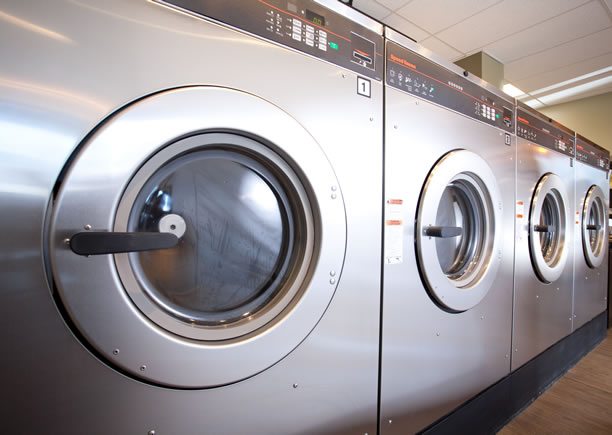
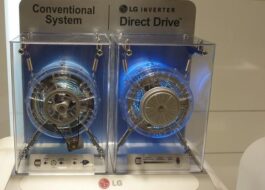
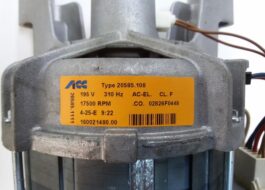

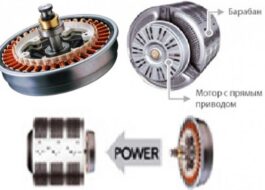
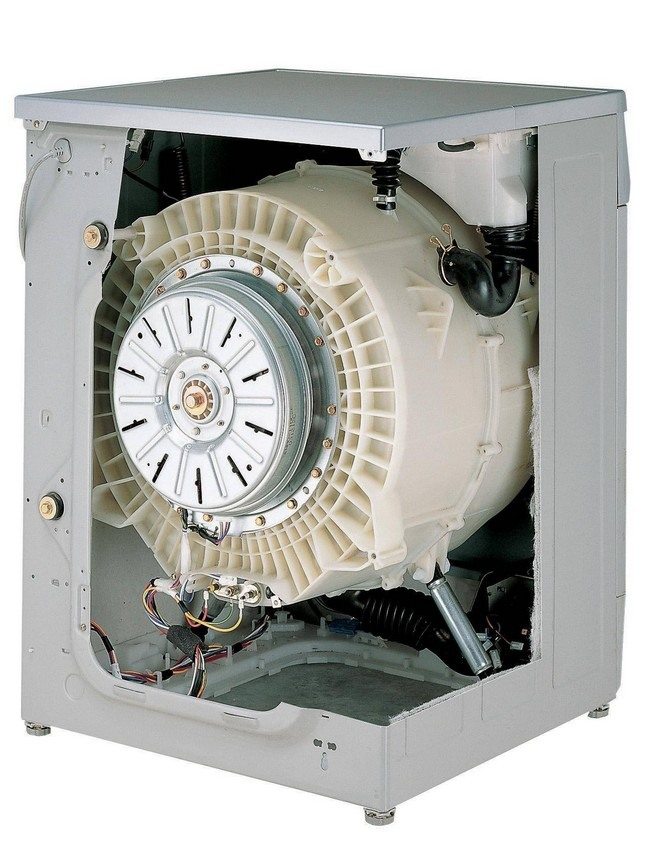










Add a comment